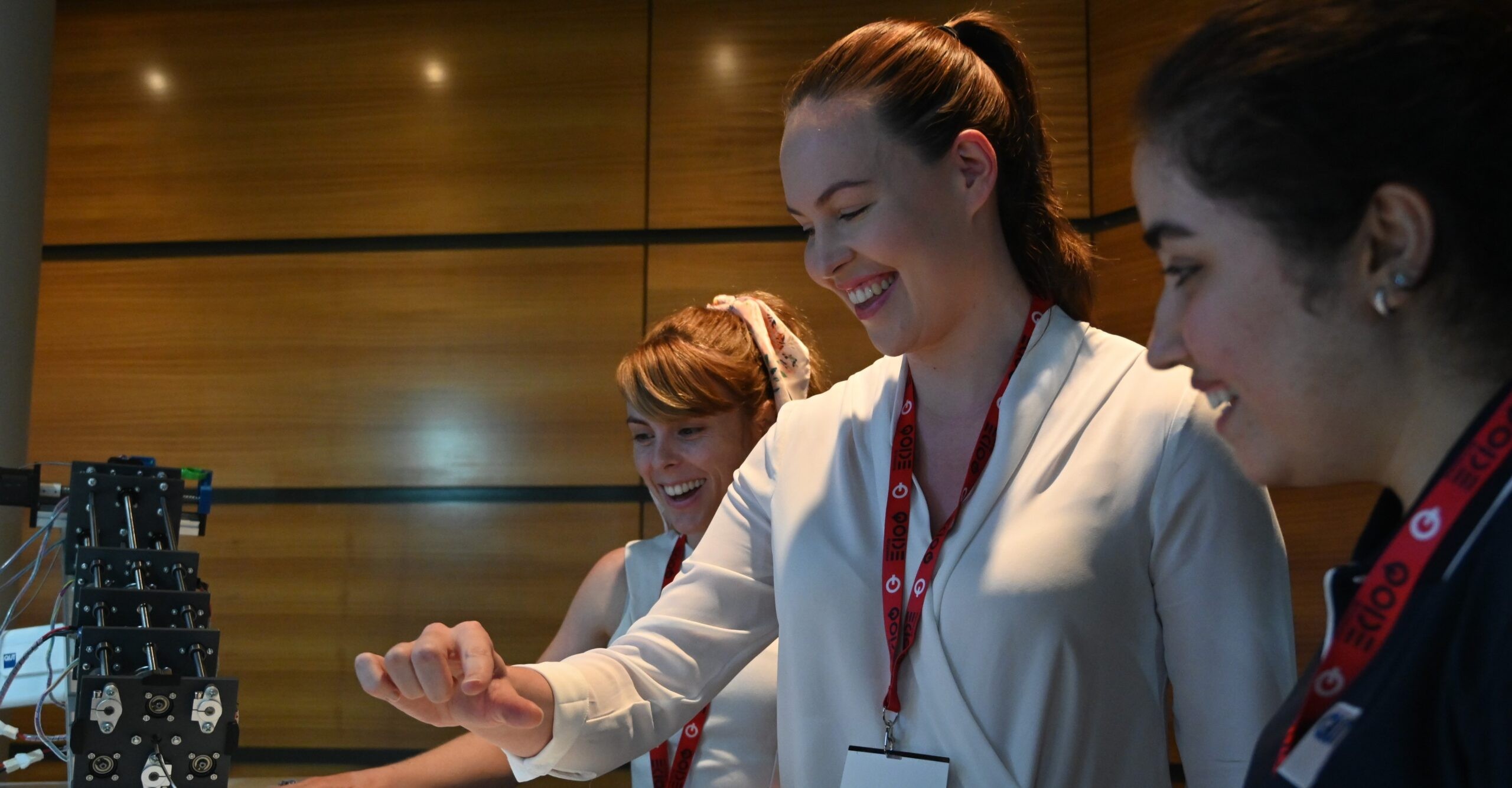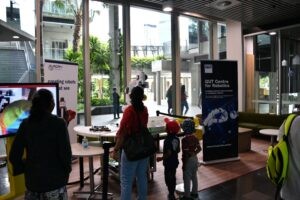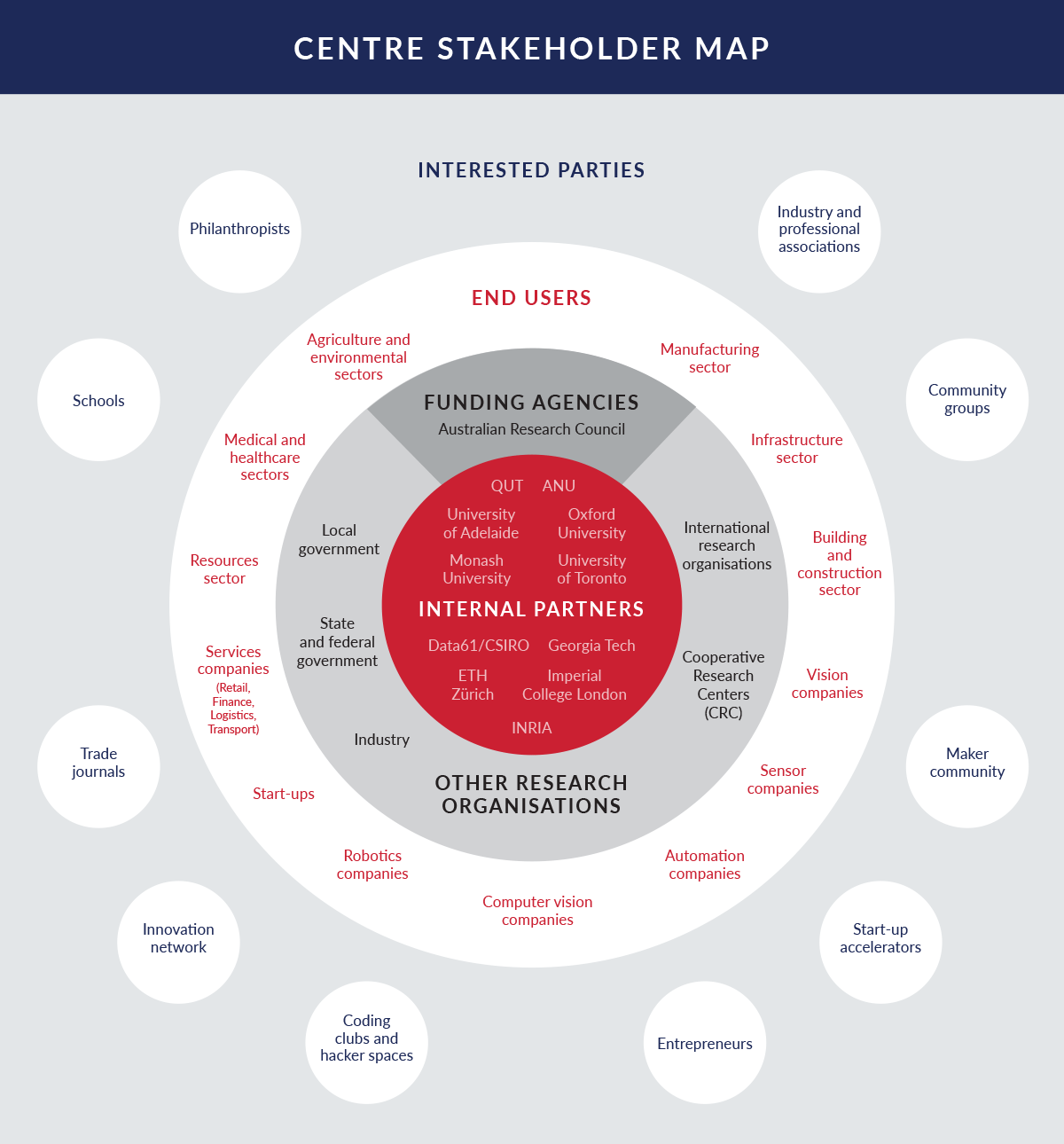End-User Engagement

The Centre is focused on generating impactful science and technologies that transform industry and provide economic and social solutions.
It is not enough for the Centre to undertake highly innovative internationally impactful science if it fails to translate research into tangible benefits for end users. The Centre however does not aim to compete with existing businesses, but rather to identify companies we can partner with to build and deliver technological solutions that will serve a range of industries.
Our key focus is on developing robotic vision technologies in those areas where their application is identified as having the highest potential economic benefit to Australia, as outlined in the Centre’s 2018 release of A Robotics Roadmap for Australia. In particular; resources, manufacturing, healthcare and wellness, services, defence, infrastructure, Agriculture, the environment and space.
How we engage
Robotic vision has the potential to impact all industries. As a result, the Centre’s End User Engagement Strategy must incorporate a variety of approaches. Including:
- demonstrations where existing and potential end users can see our technologies in operation;
- sector-specific industry workshops, engaging directly with businesses to understand what challenges they are facing and how these challenges can be addressed through robotic vision solutions;
- traditional media engagement, social media and public events;
- meetings between our Chief Investigators and Associate Investigators with industry representatives from our targeted impact areas;
- attracting high profile international conferences to Australia;
- VIP tours (the Centre regularly invites high-profile visitors to our various nodes to showcase our evolving work); and
- publication of research papers and articles in respected trade and peer-reviewed journals.
In the past the Centre has advocated to both industry and government, especially around the development and release of Australia’s first Robotics Roadmap. Increased advocacy was a key part of our 2020 operational plan. Activities were to have included a visit to Canberra by the Centre’s Executive Committee to meet with ministers and government officials as well as a Robotic Vision Summit held in partnership with PwC. These activities were designed to develop the knowledge of our stakeholders, about the role robotic vision can play in transforming industry and providing Australia with a range of economic and social solutions. Unfortunately, due to COVID-19 none of these activities occurred.

Centre stakeholders
The Centres success is due in part to our continuous engagement with a wide range of stakeholders. Over the life of the Centre these have included our funding agencies, partner organisations, research groups, government departments, industry, community groups and schools.
The Centre also gained immeasurable value from its advisory boards. The Centre established two external boards following its commencement, a Centre Advisory Board in 2014 and an End-User Advisory Board in 2015. However, following the Centre’s mid-term review in 2017 it was decided that the two groups should be merged. A new Centre Advisory Board was born in 2018 which included representatives of the two previous groups. The Centre wishes to acknowledge the contribution of all three boards. Members from each of these Boards have provided invaluable advice and guidance to the Centre’s Executive Committee. Volunteering their time to this cause, they have provided a unique external perspective to a range of strategic discussions.
We are very grateful for everyone that have contributed to understanding, informing and achieving our mission.
